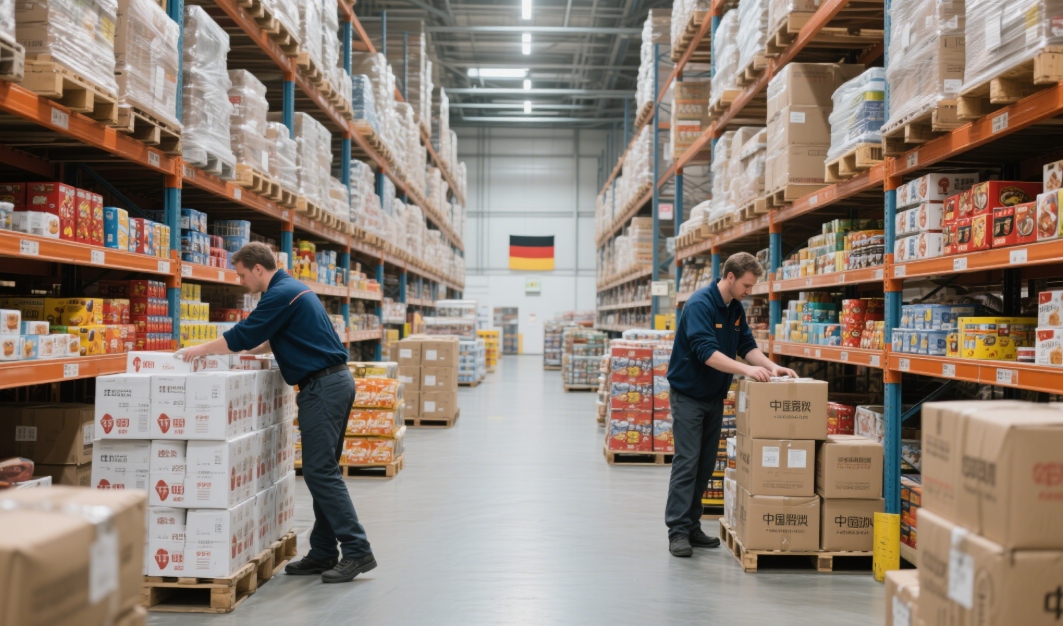Login
How to Import from China to Germany

Importing goods from China to Germany can be a highly profitable move for e-commerce sellers, manufacturers, and retailers. With China’s vast manufacturing capabilities and Germany’s strong consumer market, the trade route between these two countries is one of the most active in the world. However, navigating customs regulations, shipping logistics, and documentation requirements can be complex—especially for newcomers.
In this guide, we’ll walk you through the essential steps to successfully import from China to Germany, whether you’re selling on Amazon, Shopify, Walmart, or running your own retail or manufacturing business.
1. Understand Import Regulations and Documentation
Germany, as part of the European Union, follows EU-wide import regulations. When importing from China, your goods must comply with EU standards, including CE marking for electronics and other regulated products.
Key documents you’ll need include:
- Commercial Invoice
- Packing List
- Bill of Lading or Air Waybill
- Certificate of Origin
- Import Declaration (via ATLAS system in Germany)
You should also check the TARIC (Integrated Tariff of the European Communities) to determine applicable duties and whether your product requires an import license
2. Choose the Right Incoterms
Incoterms define who is responsible for shipping, insurance, and customs duties. Common choices for importing from China to Germany include:
- FOB (Free on Board) – Supplier handles delivery to the port; you manage shipping and customs.
- DDP (Delivered Duty Paid) – Supplier handles everything, including customs clearance and delivery to your warehouse.
For many e-commerce sellers, DDP shipping from China is the most convenient option, especially when working with a reliable logistics partner.
3. Select a Reliable Freight Forwarder or 3PL Partner
A trusted freight forwarder or third-party logistics (3PL) provider can simplify the entire process. Look for partners who offer:
- Warehousing in China
- Consolidation services
- Customs clearance in Germany
- Last-mile delivery to Amazon FBA or other fulfillment centers
At Easy China Warehouse, we specialize in helping cross-border sellers streamline their supply chain from China to Europe, including Amazon FBA prep services, bulk shipping, and door-to-door delivery.
4. Calculate Import Duties and VAT
Germany applies import duties based on the product’s HS code and country of origin. Additionally, 19% VAT is charged on the total value of goods, shipping, and duties.
You can use the EU TARIC database to estimate your costs or consult with a customs broker to avoid surprises.
5. Optimize for E-commerce Fulfillment
If you’re selling on platforms like Amazon Germany, Shopify, or Walmart, make sure your logistics partner can:
- Label and prep products according to platform requirements
- Offer FBA direct shipping
- Provide real-time tracking and inventory management
Efficient fulfillment is key to maintaining high seller ratings and customer satisfaction.
6. Stay Compliant with Product Standards
Ensure your products meet EU safety and labeling standards. For example:
- Electronics must have CE certification
- Toys may require EN71 compliance
- Textiles must follow REACH regulations
Non-compliance can lead to customs delays or product seizures.
Final Thoughts
Importing from China to Germany is a strategic move for businesses looking to scale in the European market. By understanding the import process, choosing the right logistics partner, and staying compliant with EU regulations, you can minimize risks and maximize profitability.
Need Help with Your Shipment from China?
If you have any questions or need assistance with your logistic shipment from China, please don’t hesitate to reach out to us. We are committed to providing the support you need—from sourcing and warehousing to customs clearance and last-mile delivery.
